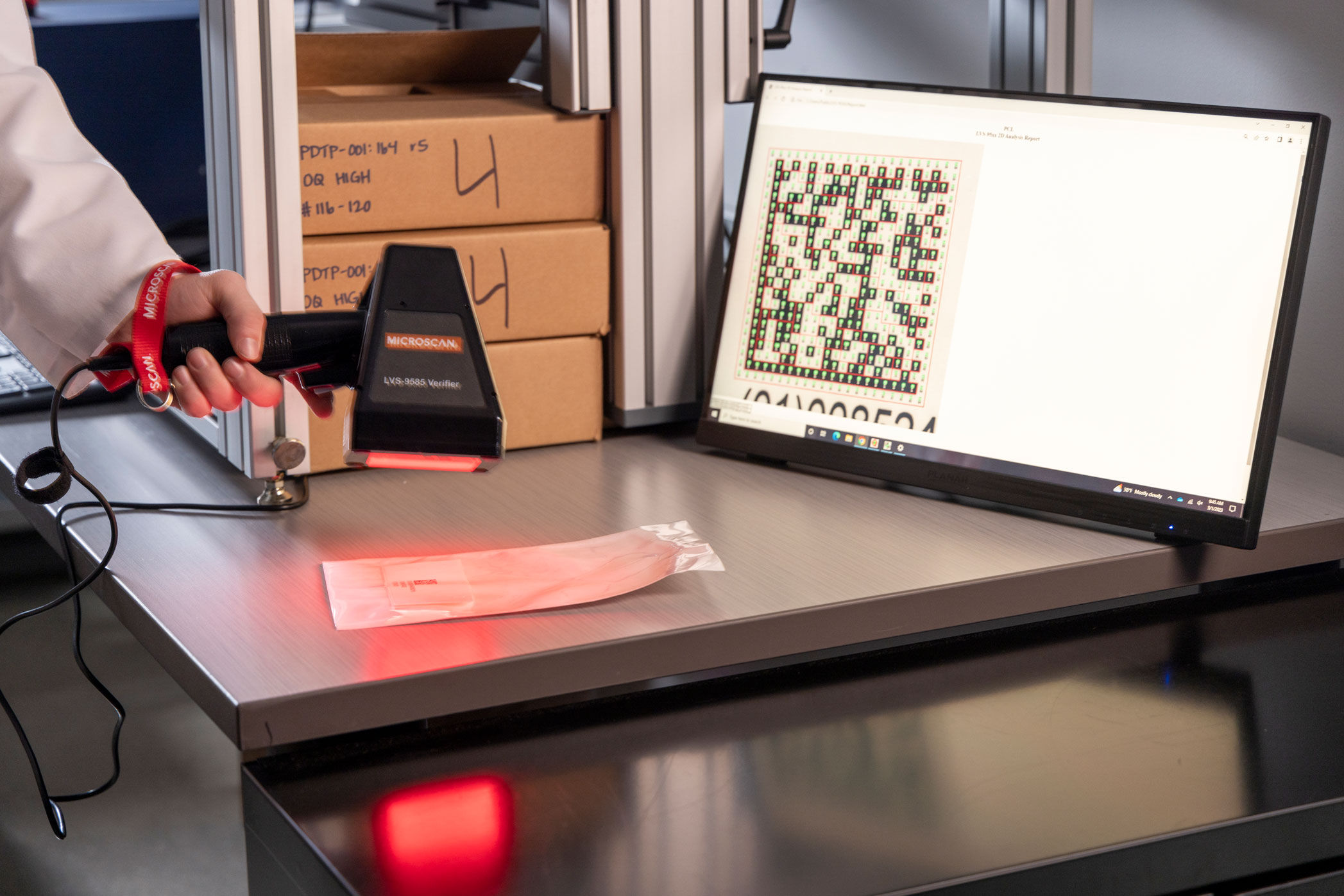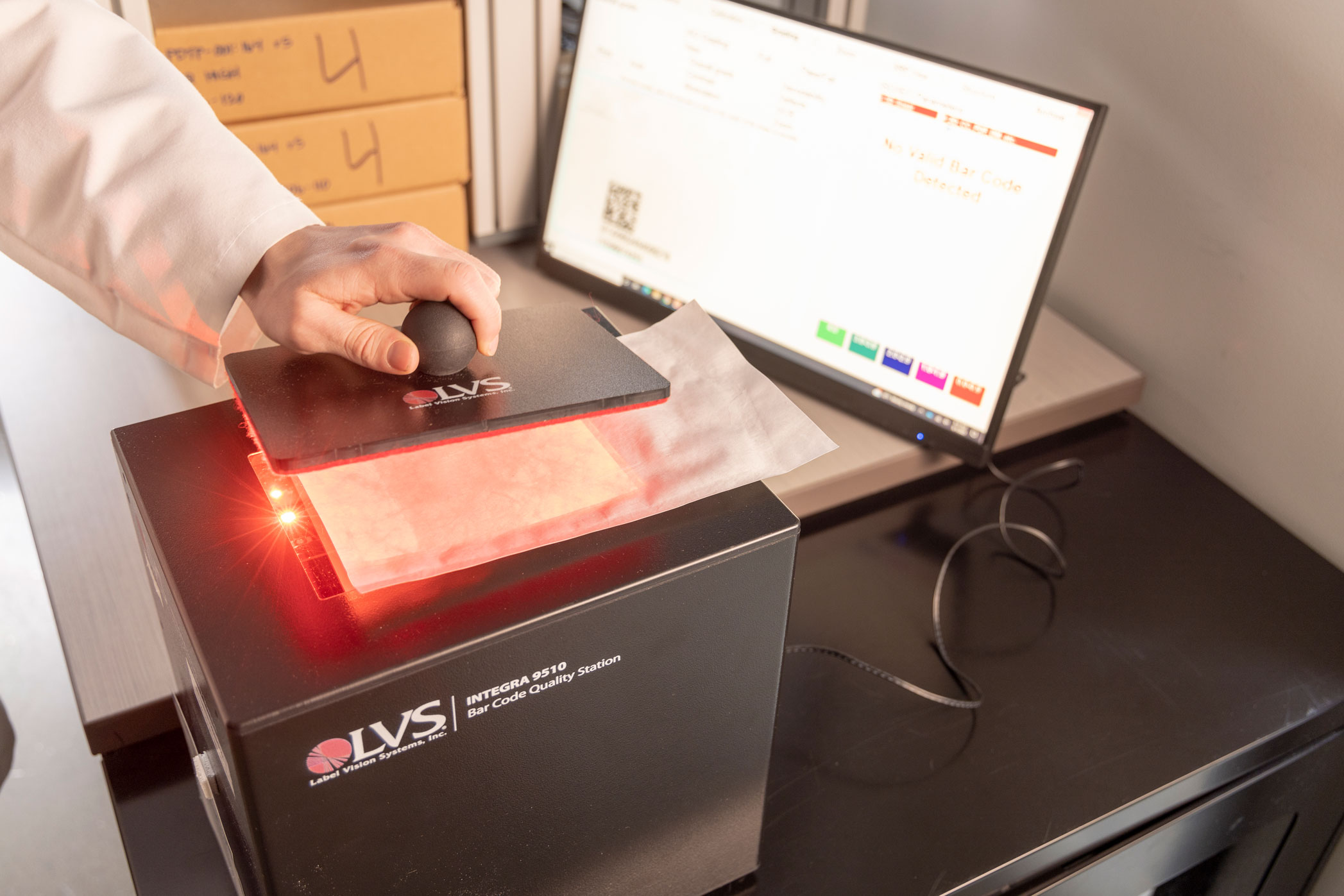
ISO & GS1 Barcode Grading
Packaging Compliance Labs offers ISO 15415 and ISO 15416 barcode grading to measure barcode quality. A specially-designed barcode scanner is used to image the printed barcode, and then analyze the barcode against internationally-recognized standards for barcode quality. These include such characteristics as spacial ratios, contrast, dimensions, and a variety of other factors. The result is a barcode grade ranging from 4.0 (the best) to 1.0 (the worse).
The method is applicable to both linear and 2d barcodes and includes a wide variety of barcode types that are used commercially across the world. Higher quality barcodes will help ensure industry compliance with UDI regulations, as well as reduce the number of product returns and reduce packaging waste and expenses. Barcode grading is commonly used in both packaging validation and production quality control & monitoring.

Industry Application
This barcode verification test quantifies the barcode legibility of a packaging system. It is typically used for printing-process qualifications and evaluating different types of barcodes after distribution or shelf life events. With increased regulations around UDI and EU MDR, barcode grading is emerging as an important consideration of the packaging validation process.
Frequently asked questions
What does barcode grade do?
This barcode verification test quantifies the barcode legibility of a packaging system. It is typically used for printing-process qualifications and evaluating barcodes after distribution or shelf life events.
What ISO barcode standards does PCL use to test for barcode grading?
Packaging Compliance Labs offers ISO 15415 and ISO 15416 barcode grading to determine how easily a code will scan.